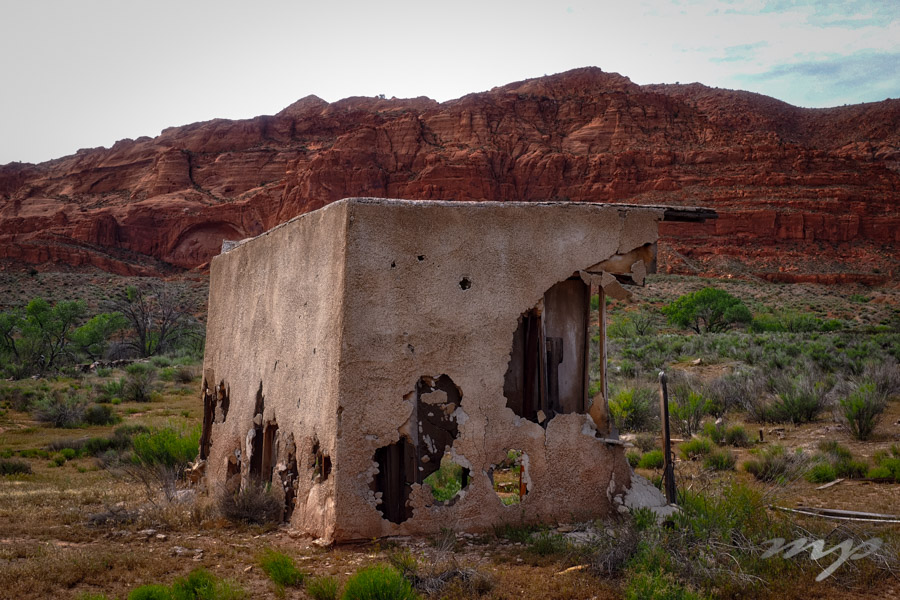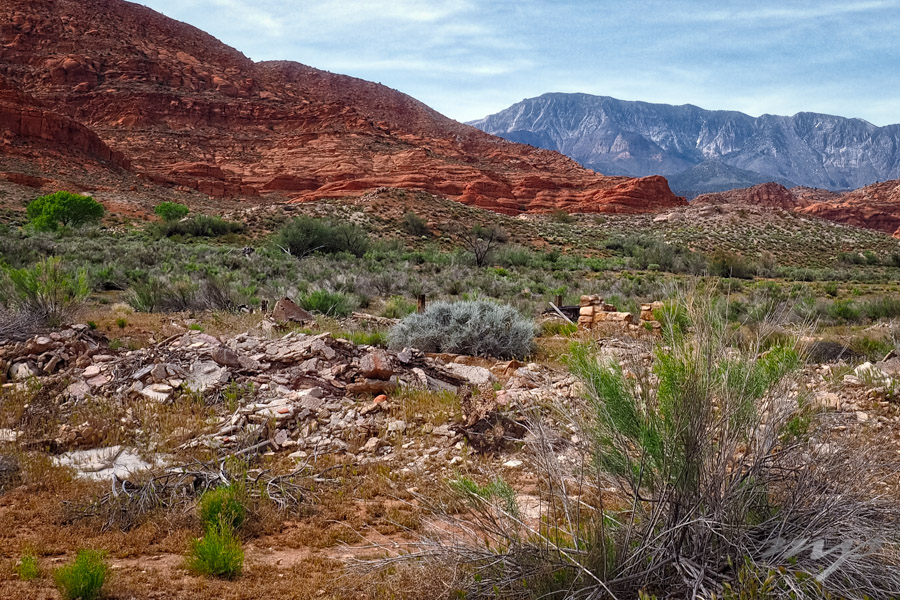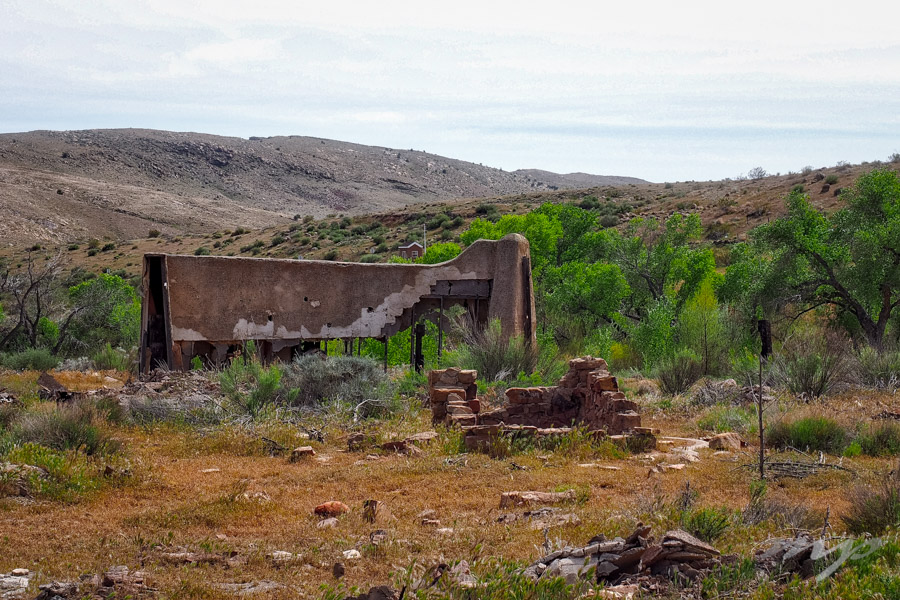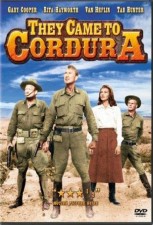
West of the old ghost town of Harrisburg, UT, and just inside the boundaries of the Red Cliffs National Conservation Area, are the tan stucco and wire ruins of a Mexican village, complete with plaza and fountain. No, not a real Mexica village but one constructed by Columbia Pictures as the set for the 1959 movie, “They Came to Cordura.”

While filming the picture in 1958 local men and boys were recruited as extras for the Cavalry charges and gun battles filmed against the scenic backdrop of red sandstone cliffs and the historic rock walls of old Harrisburg.

 This picture was an important role for Gary Cooper. He played Thomas Thorn, a career Army officer given an assignment in 1916 to lead five Medal of Honor candidates from Mexico to the army post at Cordura, Texas. During this journey Thorn, who had been branded a coward during battle, hopes to learn about heroism from these five men but learns much more of base human nature.
This picture was an important role for Gary Cooper. He played Thomas Thorn, a career Army officer given an assignment in 1916 to lead five Medal of Honor candidates from Mexico to the army post at Cordura, Texas. During this journey Thorn, who had been branded a coward during battle, hopes to learn about heroism from these five men but learns much more of base human nature.
This site is a few miles from our RV park along one of the routes we often walk.

Ahhhh, the good ol’ days before CG. :-)
Yeah, the good ol’ days — I’m sounding old. :-) I use to love those old action westerns. Now they seem so tame.
Hmmmm. Ruins, from 1959? They sure don’t make ’em like they used to! :) I guess that one could say that it was built in the 1900s!
Considering they were made to be used for only a few months I’d say these things lasted pretty well! :-) What gets me is they built this set and then just walked away and left it there…where was the clean-up crew?